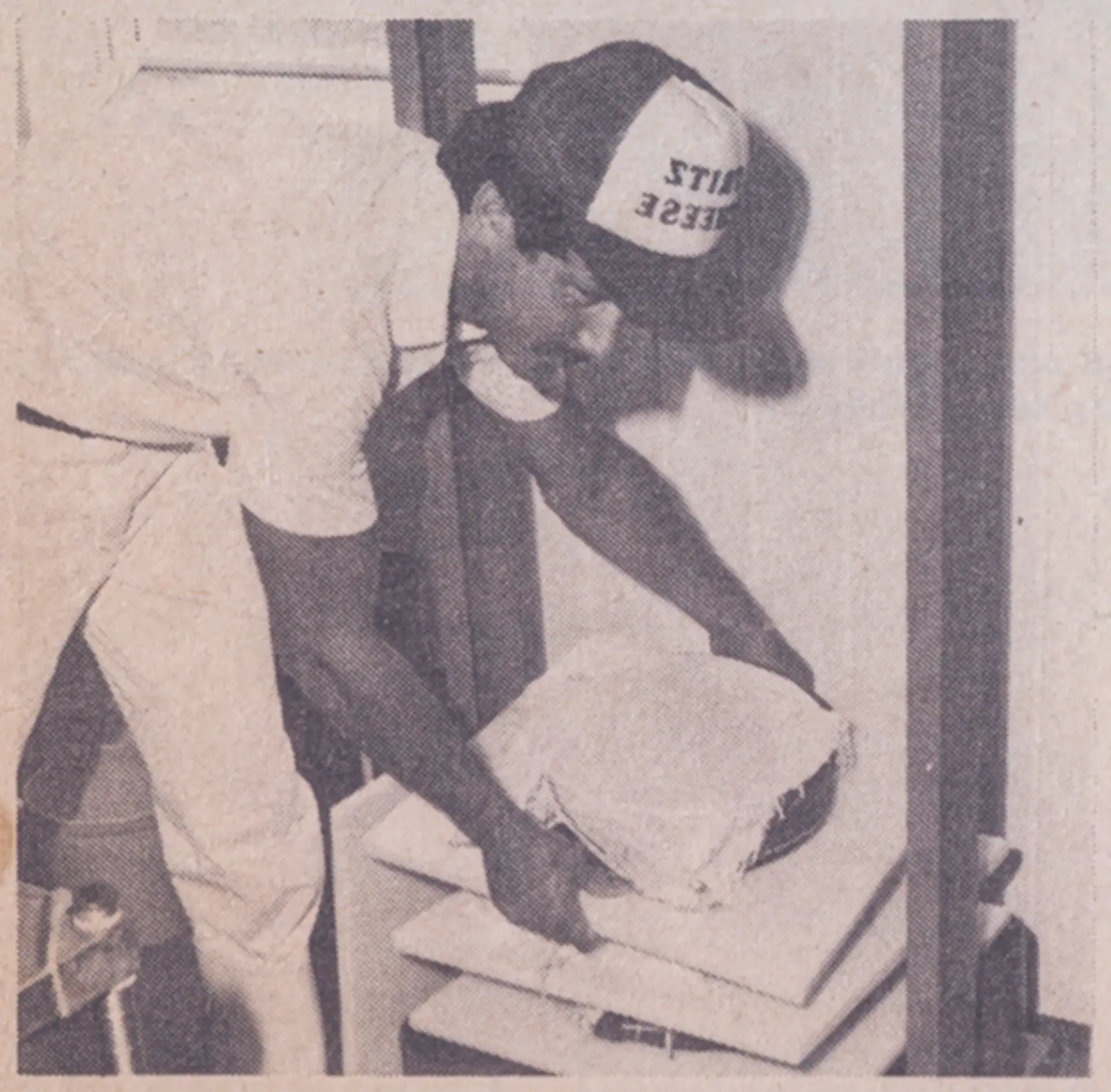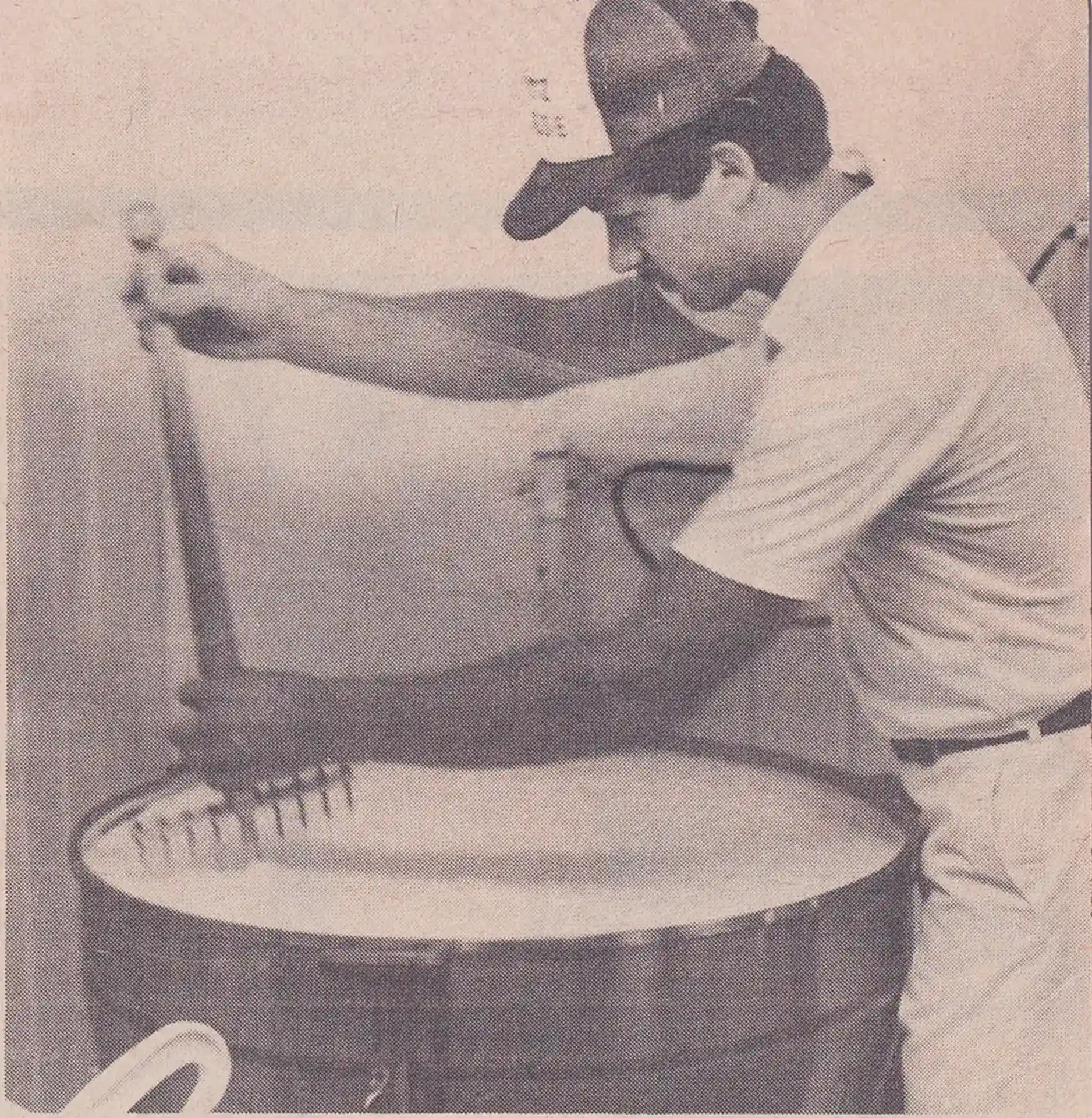In this article
- Text link
- Text link
(Unknown newspaper, translated from the French articles).
Fritz Kaiser makes his raclette cheese in the traditional Alpine way, except that he uses pasteurized milk rather than raw milk.
He uses whole milk that he buys from his father. “I always use the same milk, he says, so that the taste of my cheese always remains the same”.
He begins by filling a 180-liter vat with milk, from which he removes 1 liter of cream, which he uses to make butter. He heats the 180 liters of milk to a temperature of 67 degrees Celsius while kneading it, which has the effect of pasteurizing the liquid.
Once pasteurization is complete, the milk is allowed to cool before the bacterial culture, calcium chloride and rennet are added to thicken it to a consistency similar to the firm yogurt found on the market.
Special technique
Once the desired consistency has been achieved, using a special technique, he cuts it into small grains reminiscent of cottage cheese. He stirs again to separate the whey. He withdraws 10 gallons of whey, which he feeds to his pigs! Then he adds water, which finally gives the cheese a harder consistency.
“I always use the same milk”, he says, “so that the taste of my cheese always remains the same”.
He divides the mixture into three portions, and molds three 12 to 13 pound wheels. Each wheel is then pressurized in an air press for three hours. The wheels then rest for around 18 hours before being soaked for 30 hours in a brine bath.

La mise sous pression, dans une presse à air, des meules de fromage, est une des nombreuses étapes à la production de ce délicieux aliment. (Photo Ken Wallett).
The final stage is the aging cellar, kept at a temperature of 15 degrees Celsius. The cheeses remain here for around 2 months, and are lightly soaked in salt water four times a week, which has the effect of refining the semi-firm surface, such as the surface of Oka cheese.
Tilsit
Mr. Kaiser also makes small wheels of raclette cheese, known as tilsit. For every 180 liters of milk, he produces 10 four-pound wheels.
The difference between tilsit and raclette lies mainly in the priming temperature and maturing time, because in fact they use the same ingredients and the same preparation method.
Raclette is a Swiss specialty usually eaten as fondue. But 90% of Quebecers eat it as it is, says Kaiser. It’s best to take it out of the fridge at least an hour before eating it, he adds, then it will be softer.
Raclette is excellent with red or white wine, but fondue is best served with white wine, he advises. There is a wide variety of recipes for eating fondue, but the Swiss prefer it served with a warm potato, says Mr. Kaiser.
There are appliances on the market specially designed for melting cheese, distributed by Tefal and others. These are called raclette-grills. Cheese is cut into slices, each placed on a small frying pan and then slid under a hot plate. Some griddles are even designed so that you can cook a steak on top while the cheese melts underneath.
“Raclette can be a very slow meal, just like fondue bourguignonne”, explains Christin Kaiser. “It’s a really good way to welcome friends to the table”.



